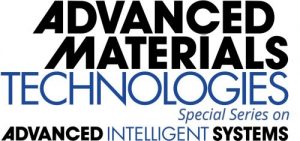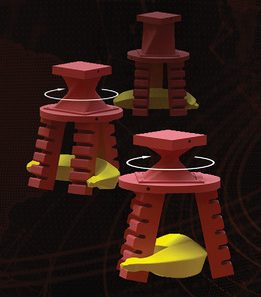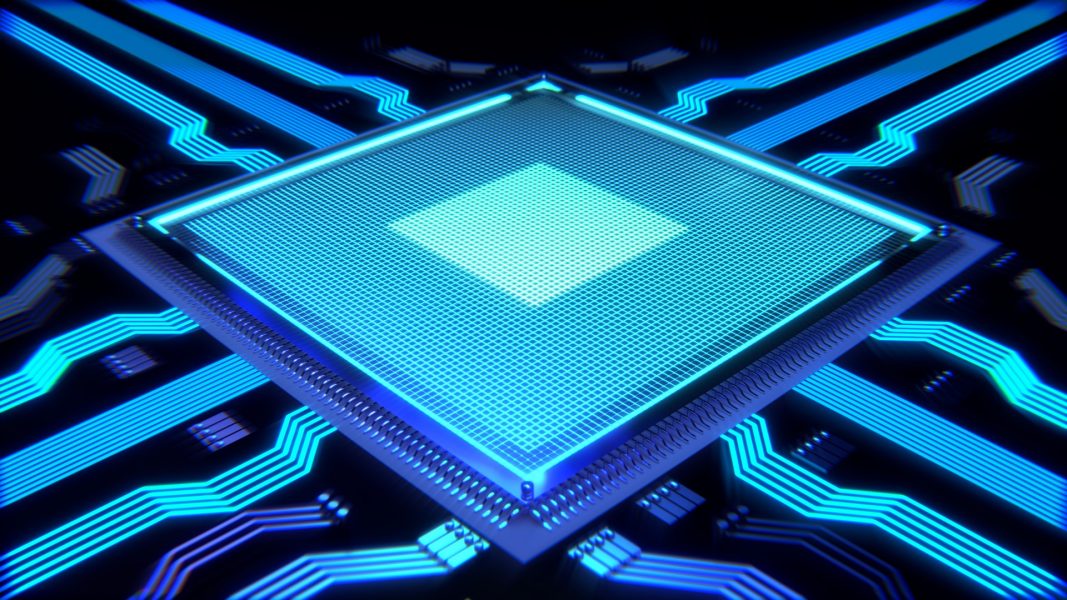Advanced Materials Technologies is part of the Advanced Materials family of journals and began in 2016 as a forum for top-level technology-related materials application research.

In recognition of the recent significant attention on various aspects of “intelligent systems” and to strengthen our presence in this area, Advanced Materials Technologies has launched an Advanced Intelligent Systems special series of invited-only articles from top scientists in the field. Different subsets of intelligent systems, including robotics, automation and control, the human-machine interface, smart and responsive materials, smart sensing systems, neuromorphic computing, and programmed self-assembly are covered in this special series. All articles in the series will be made freely available to all for a limited time.
Keep an eye out for new articles in Advanced Materials Technologies or bookmark the virtual issue page to stay up-to-date with the latest top-level contributions to this special series.
In this monthly feature, we highlight the most recent papers which are published as part of the Advanced Intelligent Systems special series.

Recent Advances in Memristive Materials for Artificial Synapses By Ji Su Han, Hyojung Kim, Soo Young Kim and Ho Won Jang Neuromorphic architecture heralds a new era of next generation computing system. Memristor‐based artificial synapses have been considered as promising basic units of neuromorphic computing and have displayed excellent synaptic behaviors. Up‐to‐date advances in artificial synapses are categorized into the type of memristive materials and reviewed with their working mechanisms. Future research directions are provided for improving synaptic functions for neuro‐computing. |

Learning from an Intelligent Mechanosensing System of Plants By Tan‐Phat Huynh and Hossam Haick The main approaches used for imitating the mechanosensing of plants, which relies on changes in their Ca2+ concentration across the cell membrane upon mechanical stimulus, are reported. Recent achievements in this field and the trends that would lead for achieving “survival” features similar to those that characterize the plant’s kingdom are discussed. |

Recent Advances in Smart Wearable Sensing Systems By Zheng Lou, Lili Wang and Guozhen Shen Smart wearable sensing systems (SWSS) have attracted widespread attention in all aspects of human daily life due to the characteristics of multifunctional, superintegration ultraminiaturization. Recent progress and advantages of SWSSs for their use in practical electronic applications are summarized. Potential challenges within the wearable electronics field are also discussed. |

Vacuum‐Powered Soft Pneumatic Twisting Actuators to Empower New Capabilities for Soft Robots By Chen Ji, Jun Zou, Huayong Yang and Min Pan A novel vacuum‐powered soft pneumatic actuator that operates with two degrees of freedom offers the advantages of diverse functions, ease of manufacture, high load capability, and is cost efficient. The feasibility of the actuator is demonstrated using prototypes based on a flexible joint and wrist, a rotatable crawling robot, a pipe‐climbing robot, and a vacuum‐powered soft pneumatic twisting actuator‐driven car. |

Reconfigurable Spike Routing Architectures for On‐Chip Local Learning in Neuromorphic Systems Spiking‐routing architectures that feature fast inverse lookup (and thus feasible real‐time on‐chip learning) and excellent reconfigurability are proposed and rigorously examined in theoretical and experimental fashions. Among the four proposed architectures, pointer‐based scheme accommodates the most neurons without routing traffic congestion at a given clock speed, which can also be applied to intercore spike routing in a neuromorphic cluster. |

Artificial Synapse Emulated by Charge Trapping‐Based Resistive Switching Device By Shi‐Rui Zhang, Li Zhou, Jing‐Yu Mao, Yi Ren, Jia‐Qin Yang, Guang‐Hu Yang, Xin Zhu, Su‐Ting Han, Vellaisamy A. L. Roy and Ye Zhou An artificial synapse based on the polyvinylpyrrolidone (PVPy)–Au NPs hybrid materials through solution process is reported. Synaptic functions such as paired‐pulse facilitation, post‐tetanic potentiation, the transformation from short‐term plasticity to long‐term plasticity, as well as the learning‐forgetting‐relearning process are emulated, making the polymer–metal nanoparticles hybrid system valuable candidates for the design of novel artificial neural architectures. |

Motion Control of Piezoelectric Tripod Platform via Feedforward Hysteresis Compensation By Hyeong‐Geon Kim, Jong‐Nam Kim, Tae‐Won Na, Kwang‐Chun Park and Il‐Kwon Oh The piezoelectric tripod platform is developed utilizing three piezoelectric legs to produce large transverse stroke and angular motions with three degrees‐of‐freedom. Owing to the feedforward compensator based on the rate‐dependent hysteresis model and the feedback control integrated with rate‐independent hysteresis model, the tracking controllability and accuracy of the tripod manipulator can be greatly enhanced. |

By Dong‐Dong Han, Yu‐Qing Liu, Jia‐Nan Ma, Jiang‐Wei Mao, Zhao‐Di Chen, Yong‐Lai Zhang and Hong‐Bo Sun Humidity/thermal/light multiresponsive graphene actuators are prepared by sequential vacuum filtration of graphene oxide (GO) and reduced GO (RGO) with a pretailored reduction gradient. GO/RGO bilayer actuators with tunable curving performance are achieved by controlling the photoreduction degree. Humidity responsive mimosa and multiresponsive paper robot are designed based on the competitive water adsorption between GO/RGO layers and the thermal‐, light‐promoted water desorption. |

Machine‐Learning‐Based Monitoring of Laser Powder Bed Fusion
By Bodi Yuan, Gabriel M. Guss, Aaron C. Wilson, Stefan P. Hau‐Riege, Phillip J. DePond, Sara McMains, Manyalibo J. Matthews and Brian Giera A procedure to label laser powder bed fusion video data and leverage it to train a convolutional neural network is demonstrated. Testing the neural network reveals that it can predict track continuity and the average and standard deviations of track width from high‐speed video alone, reducing the need for postbuild quality assessment. |

















